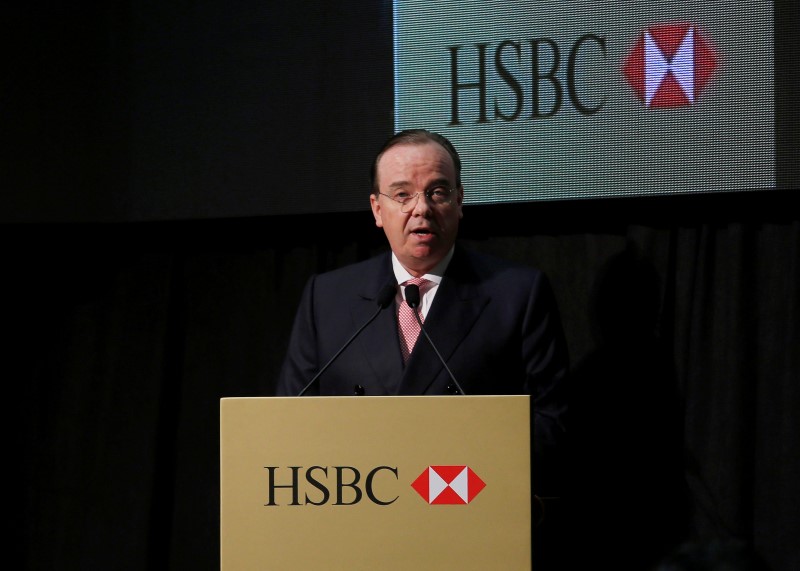HONG KONG (Reuters) - Cross-border trade settlement denominated in China's yuan currency is expected to climb to over 50 percent of China's total trade by 2020, more than doubling the current level, Stuart Gulliver, HSBC (LONDON:HSBA)'s Group Chief Executive, said on Thursday.
A scheme launched in 2009 and initially in five Chinese cities to encourage cross-border trade settlement in yuan rather than U.S. dollars has seen rapid growth in the past few years, with yuan settlement of trade debts rising from 1 percent of transactions in 2010 to 22 percent last year.
This robust momentum was not affected by the quick depreciation of the yuan earlier this year, showing the yuan's use in trade settlement is rooted in genuine need and supported by confidence in the fundamental and relative stability of the currency, Gulliver told a forum in Hong Kong.
The yuan, nicknamed the "redback", fell 2.4 percent against the dollar in 2014 and that weakness remained until earlier this month when suspected intervention by China's central bank helped it recover some ground.
So far, the geographical spread of China's trading partners denominating trade in the yuan remains very narrow, with the lion's share taking place in Hong Kong and most of the rest happening elsewhere in Asia.
"In this sense, the renminbi (yuan) is not yet as integrated as a trade currency as it both could be and will be. We do expect this to change," said Gulliver.
China's yuan has already broken into the top five as an international payments currency, overtaking the Canadian dollar and the Australian dollar, said global transaction services organisation SWIFT.

Gulliver expected the yuan to increasingly represent a viable alternative to the U.S. dollar and to finally become a main reserve currency alongside with the U.S. dollar and the euro.